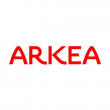FIX protocol dominates in post-trade workflow
 Three-quarters of market participants use the Financial Information eXchange protocol for confirmation and affirmation of their transactions, according to a new survey released by the FIX Trading Community, which oversees development of the messaging protocol.
Three-quarters of market participants use the Financial Information eXchange protocol for confirmation and affirmation of their transactions, according to a new survey released by the FIX Trading Community, which oversees development of the messaging protocol.
The global post-trade survey found that 75% of respondents use FIX for their post-trade confirmation/affirmation workflow, that 95% of respondents believe FIX has the potential to have the same impact in post trade as it has in the front office, and that 70% of respondents see client satisfaction as an immediate benefit with a majority also confirming cost savings as a tangible advantage.
“These survey results clearly demonstrate to success of the Global Post Trade Working Group and its members’ drive on both the buy-side and sell-side to adopt FIX standards in the post-trade allocation and confirmation process,” said Laura Craft, co-chair of the global post-trade working group at FIX Trading Community and director of equities and fixed income at Traiana. “The GPTWG fully expects more firms to adopt FIX to take advantage of both improved efficiency and cost savings in equities as well as additional asset classes.”
The aim of the survey was to see where work needs to be done by the GPTWG, in terms of both geographical and asset class perspective. The survey was distributed to the broker/dealer community in January 2015, and invited them to complete a series of questions regarding their post-trade workflow and their use of FIX. According to the organization, the majority of the 20 top global investment banks contributed to the survey and both members and non-members of FIX were invited to respond.
FIX’s supporters have been busy adapting it to the post-trade environment in recent years. As with all initiatives, the aim is to increase transparency, reduce costs and achieve greater efficiencies. The FIX Trading Community says that by not being reliant on any one vendor for the confirmation/allocation process, that single point of failure is all but eliminated.
“The survey results simply reinforce the message I have tried to convey; that if you are a buy-side firm thinking about trying to implement this flow, you can be successful, because all the major sell-side firms support this,” said Scott Atwell, head of FIX Trading and Connectivity, American Century Investments. “And because they have already implemented this, they are eager to use and provide that for other buy-side firms. American Century is receiving FIX 4.4 Confirms for approximately 90% of all our non-US confirmations, and the benefits include efficiency gains, improved straight-through processing, and quicker identification of issues, all of which provide significant risk reduction and cost savings.”
FIX is a messaging standard developed 20 years ago as a way to achieve better communication between the buy-side and the sell-side and the exchanges. Proponents of FIX argue that it has transformed trade execution and helped to promote a shift towards real time performance measurement.
At the end of last year, FIX Trading Community combined all its high performance trading and market data initiatives into a single working group, ‘emphasising the importance that high performance has in the FIX family of standards’.











































